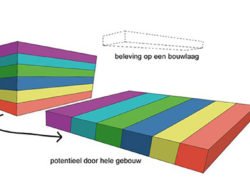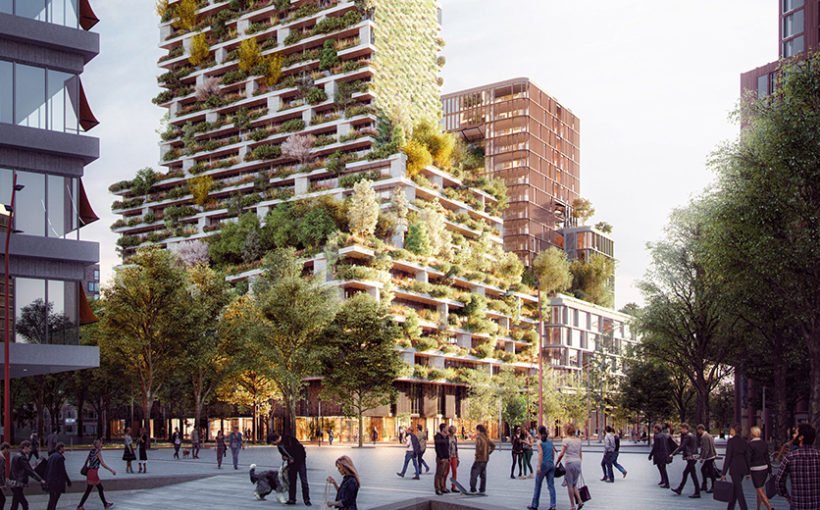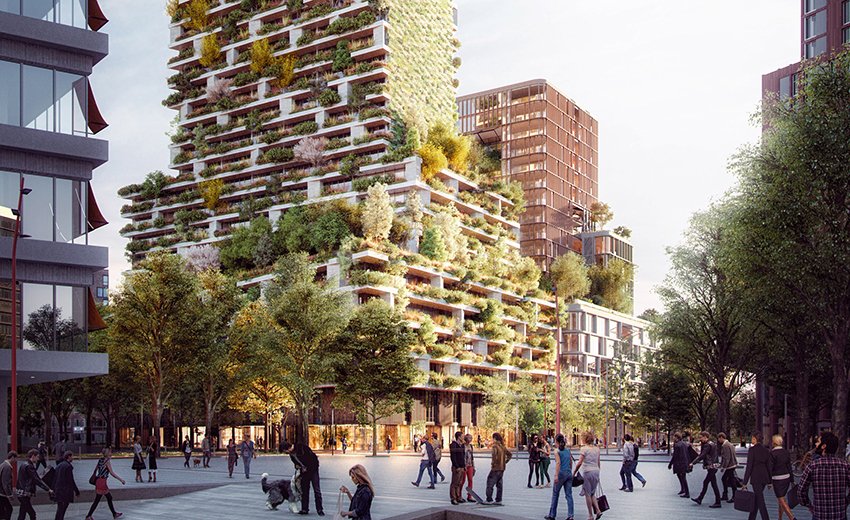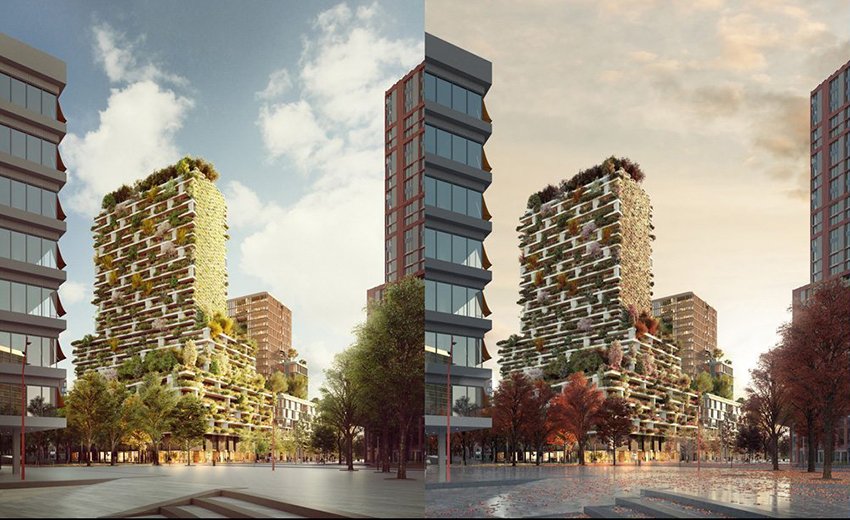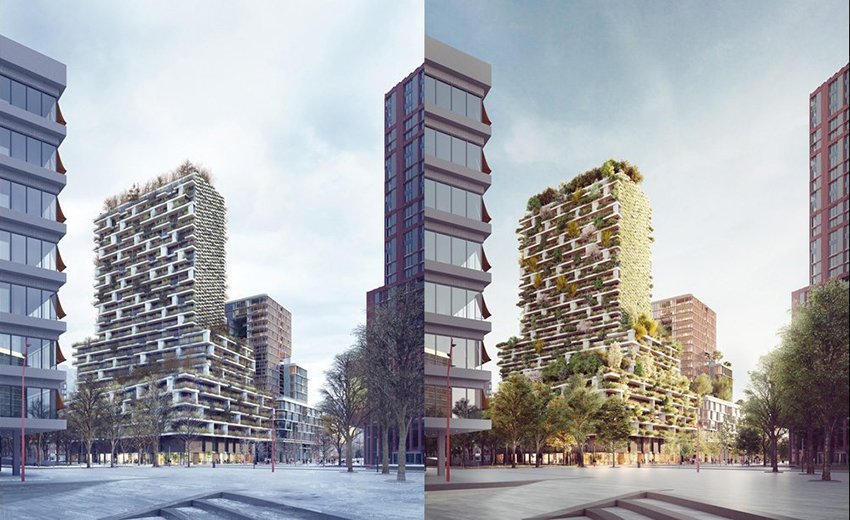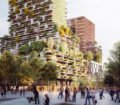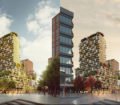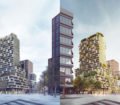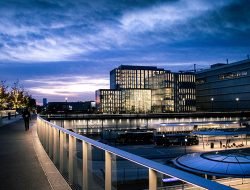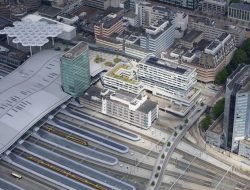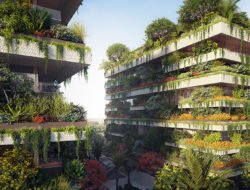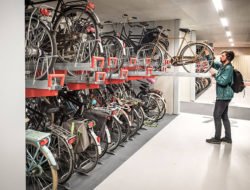Like the Bosco Verticale towers in Milan, architecture is being covered in trees to such an extent that they camouflage the building. Are vertical forests an effective solution to combat global warming? An example in Utrecht in the Netherlands.
A forest wrapped like a ribbon around a glass skyscraper up to 90 m high: planted with roughly 10,000 plants including 1,000 different species, the Hawthorn Tower, designed by the Italian architect Stefano Boeri, is to be built in the Jaarbeurs District just next to Utrecht station.
His model: the Bosco Verticale (‘vertical forest’), two residential blocks designed by the same architect, inaugurated in Milan, Italy in 2014. Larch, cherry, apple olive, beech trees… ‘These two towers are a prototype, it will take a few more years to measure all the effects, but they mean that the project has been taken seriously at last,’ says the Milan architect. Mr Boeri and his team are currently working on a dozen Bosco Verticale projects around the world: Eindhoven, Lausanne, Paris, Nanjing, Shanghai, Sao Paolo, Tirana…
As for Utrecht, the construction of the Hawthorn Tower is to start this year and be completed in 2022. Real trees will be planted on the balconies, while the façades will be entirely covered with leaves. The façades of this tower will include more than 360 trees and 9,940 bushes and flowers. That is the equivalent of one hectare of woodland.
But don’t tell the architect it is just for the sake of appearance. First objective: to combat global warming. ‘Three quarters of CO2 emissions are produced in cities, yet CO2 acts as a fertiliser for trees: forests absorb 40% of fossil fuel emissions. You have to fight the enemy on its own ground,’ says Stefano Boeri. This project will absorb more than 5.4 tonnes of CO2. Plants also mitigate summer heat waves, limiting the use of air conditioning. Second objective: to breathe more easily. Trees help to combat pollution, particularly microparticles from traffic.
The Utrecht tower also has one last ambition: biodiversity. The idea is to ‘reforest the city’. To create a distinct, forest-scale ecosystem: There will be birds, butterflies, small animals. ‘In Milan, 15 bird species have nested on the towers: falcons, swifts,’ Stefano Boeri continues. And 9,000 ladybirds were placed on the façades to combat parasites without the need for pesticides. In addition, the ground floor of the Utrecht tower will be home to a Vertical Forest Hub, a research and teaching centre on urban reforestation on a global level.
Furthermore, the development includes housing, offices, gyms, bicycle parking and a relaxation area. The only limit: the cost. The Milan towers house luxury accommodation, but this obstacle does not prevent the developers from launching other outlandish plantations. As an example, the town of Liuzhou in China is expected to have 30,000 inhabitants, 40,000 trees and more than one million diverse plants. These figures also reach dizzying heights.
Tags: Bosco Verticale, Hawthorn Tower, Stefano Boeri, Utrecht, Vertical Forest


































